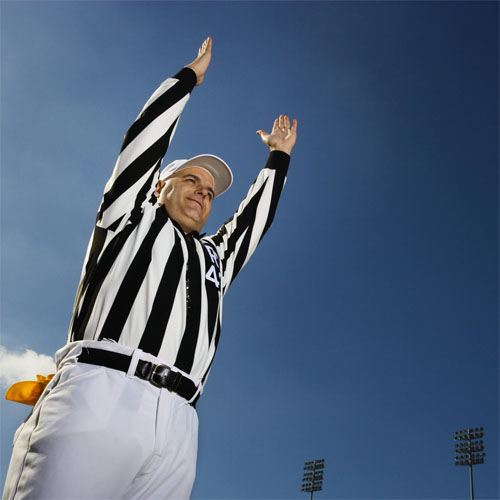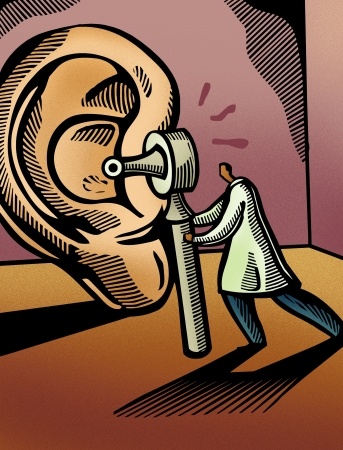
Zebra
Somewhere in, NJ
Male, 62
I've officiated football for over 30 years, now in my 26th on the college level. I've worked NCAA playoffs at the Division II and III level. In addition, I've coached at the scholastic level and have been an educator for over 35 years. I have no interest whatsoever in being an NFL official! Ever!
Does the phrase "drag them off kicking and screaming" sound familiar? To answer the second question first, I worked with a guy who was 72 when he left the field. He was still doing Division 2 and 3 college ball. He was sharp, in great shape, and he was just plain good. But it was time. And I guess that's the best answer; each official knows when it is time to step down. It is very much like retiring from your regular job - when is the right time? But doing this is a labor of love...and a little glory and ego. And I would say that in a lot of cases it is the camaraderie and bonding with fellow officials that keeps people on the field. And you don't want to give that up easily. On average, I would say that most high school and college officials step down in their late 50's up to their mid 60's. Guys are in better shape these days and work hard at it -- they aren't leaving without making sure it is the right thing for them.
I'm sorry, but I don't understand this question.
You've hit it - they're telling each other the foul. It is done in the NFL and in college to save time and move the game along. On something like a false start, it is pretty straight forward. Rather than come in to conference, the calling official (the one who threw the flag) will signal and call out (or with indicate fingers) the number of the offending player. You'll see officials come together on more complex plays or when there could be a question. For example, there might be movement by offensive and defensive linemen; who committed the foul? The two line of scrimmage officials (and sometimes the umpire) will come in to discuss it; did the defense cause the offense to jump or vice versa?
I'm editing my response as I re-read your question. You wrote before the snap. I was responding to officials giving that signal after a flag is thrown. The "rolling hands" - in college - among officials is given prior to 4th down, and it is a reminder that there are specific 4th down rules in effect for the upcoming play. If you're writing about the NFL, I'm not sure, but I'll check on that. Sorry for my mistake in responding the first time.
Unlike in college where there must be at least four on each side of the kicker, there is no such rule in high school football. The NFHS Rules Book shows no references for that under any of the pertinent rules, specifically Rule 6 - Kicking.
Pharmacist
 Have you ever given someone the wrong prescription?
Have you ever given someone the wrong prescription?
Audiologist
 How come people with hearing aids still can't seem to hear?
How come people with hearing aids still can't seem to hear?
Private Detective
Pushing can move the pile. But at some point you have forward progress stopped. In close line play it is a massive scrum; you aren't calling helping the runner. The wing officials - head linesman and line judge, the two on the line of scrimmage - are going to rule on that.
Touchback. There is an old saying in officiating: a kick is a kick is a kick. A kick remains that until it is possessed, and what you describe has no possession until the receiving team recovers it in the endzone. Had the first receiver controlled the ball (possession) and then fumbled it into the endzone, then we have a safety.
Sorry, but I don't know what you're writing about. Officials have nothing to do with standings and team selections, anyway.
-OR-
 Login with Facebook
Login with Facebook (max 20 characters - letters, numbers, and underscores only. Note that your username is private, and you have the option to choose an alias when asking questions or hosting a Q&A.)
(A valid e-mail address is required. Your e-mail will not be shared with anyone.)
(min 5 characters)
By checking this box, you acknowledge that you have read and agree to Jobstr.com’s Terms and Privacy Policy.
-OR-
 Register with Facebook
Register with Facebook(Don't worry: you'll be able to choose an alias when asking questions or hosting a Q&A.)